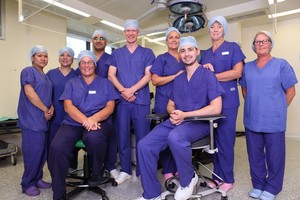
Premium Lens information leaflet
Information regarding cataract surgery in general can be found in the information leaflet entitled ‘A Guide to Cataract Surgery’.
During cataract surgery the aged natural lens is replaced by an artificial lens. This lens can be either a “standard” lens or a “premium” lens. A standard lens allows the eye to have either good distance vision (necessary for e.g. driving) or good near vision (e.g. for reading), but cannot correct astigmatism (an irregular shape of the front of the eye). Therefore glasses are often required following cataract surgery with standard lenses.
This leaflet explains the use of premium lenses in cataract surgery. It describes lenses to correct astigmatism (Toric lenses) and Multifocal lenses.
If a premium lens is used instead of a standard lens there is an increased chance of you not needing to use glasses after your surgery. This leaflet explains the considerations surrounding their use.
Toric lenses
These lenses correct astigmatism to improve distance vision. Astigmatism is a common deformity of the front of the eye that requires glasses or contact lenses to allow an image to be brought into focus properly. Many people have a small amount of astigmatism that is not noticed, but some people have a larger amount which distorts vision and needs correction with glasses for both distance and reading.
With a toric lens there is a strong chance you will not need glasses for distance vision, but you would still need glasses for reading.
Multifocal lenses
Multifocal lenses are similar to bifocal glasses in that they allow you to be able to see both in the distance and up close.
Multifocal lenses are specially designed to create two images at the same time. One is in focus for distant things and the other is in focus for near things, the brain choses which image to register depending on whether you are looking at something in the distance or something near.
The two images are good enough to allow 80% of people to perform most daily tasks without glasses either for distance or near.
There are some issues to think about however;
· The lens will cause some glare when driving at night initially, though most people find they can drive without problems at night after six months.
· Most people find that although they can read without glasses for reasonable periods, they find it more comfortable to wear reading glasses if reading for long periods in dim light.
· This lens does not work well in people with macular degeneration.
Blended vision
Another option is to reduce dependence on glasses is “blended vision”. This involves leaving one eye in focus for distance vision and setting the second eye to focus a little bit nearer. Most people find that this gives satisfactory distance and near vision for most daily activities. Patients have found that if they wish to read for some time in poorer light then this is made easier by a pair of mild reading glasses, but they manage a menu in the restaurant or to use a computer screen without glasses most of the time. This form of focusing combination does not have the problems with glare that multifocal lenses can cause, but it can reduce a patient’s 3D vision slightly.
For most patients who wish to reduce their reliance on glasses there is a solution that will help them function without glasses, most of the time. The options available are varied and it is best to discuss the options in light of your visual requirements.
Premium lenses may not be covered under all medical insurance policies but are still available on payment of a supplement.
Please ask about these options if you wish to be considered for one of these lenses.

